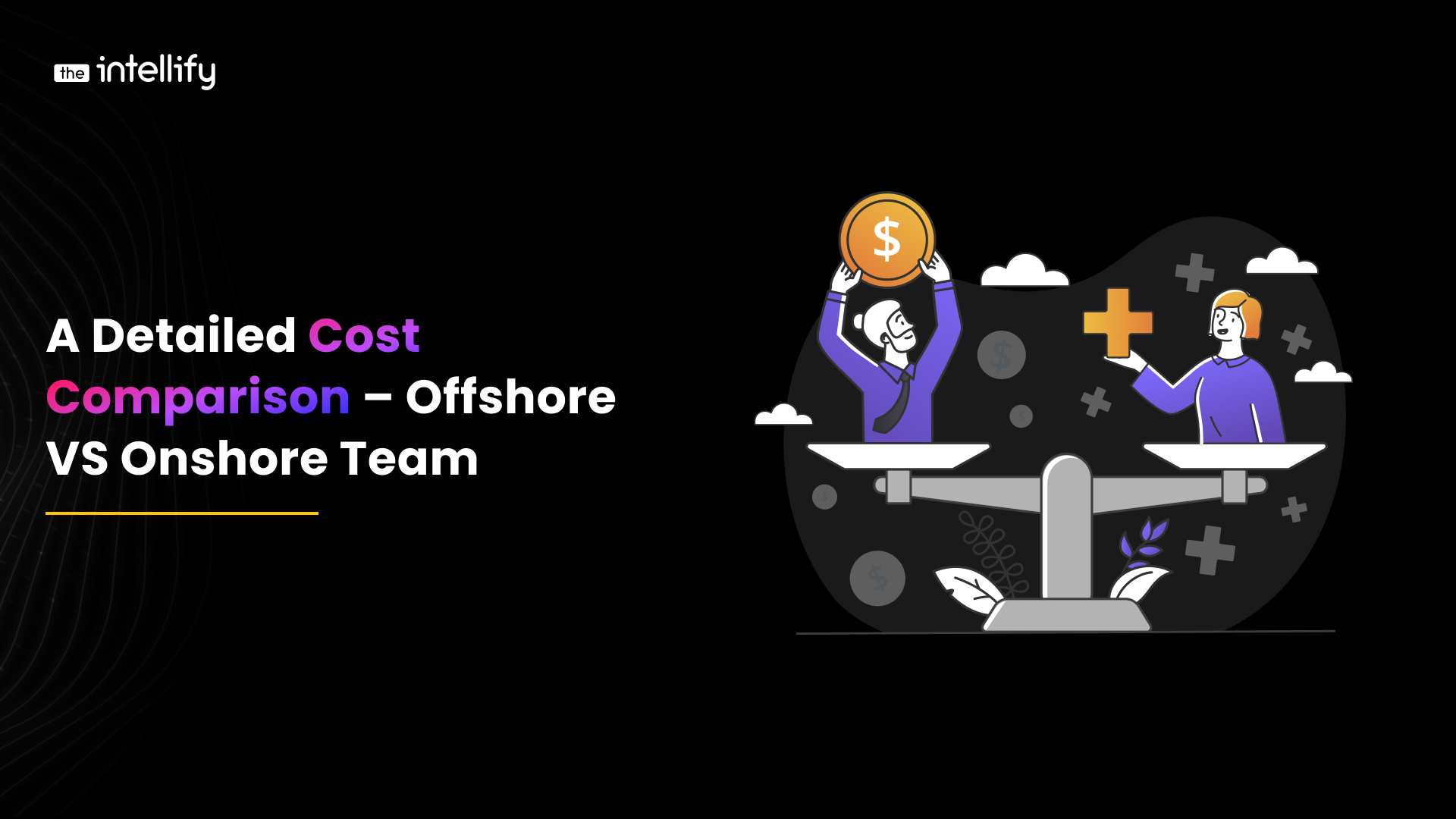Exploring the Cost to Develop a Web Application in 2024

By Jalaj Shah
May 23, 2024

Web applications are the cornerstone of modern businesses. Serving as the gateway to online services and products. As we move into 2024, understanding the financial investment required to develop. A web application development is crucial for businesses, entrepreneurs, and developers.
There are currently 1.92 billion active websites on the Internet, accessed by 5.3 billion unique users worldwide. Additionally, 462 million people are using social media platforms.
What are Web Applications and Their Types?
Web application development refers to creating applications that operate over a network. Such as the Internet, and are hosted on a web server. These applications are developed using scripting languages like PHP, Perl, or Java app development.
Web applications come in several forms, categorized into three types:
Static Web Applications
These are the simplest forms of web applications, delivering pre-written HTML forms to the user without any server-side processing. Web Application Development Costs are generally lower for static web applications due to the absence of complex back-end coding and database requirements.
Dynamic Web Applications
Unlike static applications, dynamic web applications use server-side processing to generate content in response to user inputs. This requires more sophisticated back-end coding and a database for data storage. Leading to higher development costs but offering a more engaging user experience.
Web Portals
As the most advanced type of web application, web portals serve as a central access point to many other websites or online services. They incorporate extensive features and functionalities, making them more expensive. And more complex to develop than other web application types.
Why Every Company Should Consider Developing a Web Application?
The Progressive Web Applications (PWAs) market is expanding. With projections indicating a rise from USD 1,100 million in 2019 to an impressive USD 7,600 million by 2026. This represents a remarkable growth trajectory for the PWA sector, highlighting a (CAGR) of approximately 34% from 2020 to 2026. This significant growth shows the increasing adoption and integration of PWAs across various industries, driven by their ability to provide a seamless, app-like experience on the web platform.
Businesses continue to recognize the benefits of PWAs, including enhanced user engagement and higher conversion rates. And improved performance, the demand within this market sector is expected to speed up, contributing to its robust expansion over the forecast period.
Key Cost Factors to Consider When Developing a Web Application
Several key factors can influence the cost of building a web application. At the heart of it all is the app’s complexity.
First, let’s discuss the Scope of Work (SOW). Before developing, you need a clear picture of your web app’s appearance. Are we talking about something as expansive as Netflix or more on the scale of a simple school management system?
Next, consider the location of your developers. Web app development costs can vary depending on where your team is based. Hiring local Web App Developers in places like the US, Canada, or Australia. It might set you back more per hour than outsourcing the work to regions where the talent is as skilled but more affordable.
The expertise of your developers also plays a pivotal role. Say you need a simple music app landing page designed—this might cost around $310-$520 for about 6-8 hours of work. So, a more complex page with striking 3D animations could run you $4200-$5000. The time will increase if you’re going for a custom-designed web app that blends standard and bespoke elements.
Ignore the maintenance costs, too. Web app maintenance is ongoing and takes up about 15% to 20% of your annual development budget. This includes everything from bug fixes and updating plugins to scaling up and bolstering security. For example, if your initial development cost is $320,000, annual maintenance might cost around $150,000.
And let’s remember those hidden costs. Things like securing your web app against malware and backing up data. And the occasional need for specialized security expertise adds up.
So, when planning your web application project, choose a skilled development team like The Intellify that grasps your requirements. This can help mitigate unexpected costs, especially those associated with more plugins and maintenance.
By teaming up with a reputable and competent web app development company in USA like The Intellify. You can avoid many hidden ongoing costs, ensuring a smoother, more cost-effective development process.
Understanding the Cost of Web Application Development
When diving into web application development, the costs vary based on what you want to build. If you’re looking for a simple web app with a few basic features, you could be looking at a starting cost of around $5,000. But if your ambitions stretch toward a more feature-rich, complex application, then brace yourself—expenses could climb to $500,000 or more.
Chatting with a web app development company or a freelance developer is a good idea if you’re trying to get a more accurate web or mobile app cost. They can provide a tailored estimate based on your project’s specific needs. You can also connect with The Intellify for web app development; we have a dedicated development team for your needs.
Simple Web Applications: These projects need more content or interactive elements. Development might take about a month, and they cost between $15,000 and $50,000.
Applications for Medium-sized Businesses: These are more professional-level applications that could take 3-4 months to develop due to their richer content and interactive capabilities. This category includes e-commerce sites, portal prototypes, and apps for small businesses, with prices ranging from $50,000 to $150,000.
Applications with Complex Requirements: From $60,000 to $250,000. Custom web apps, especially those that include exclusive content management systems. And intricate designs, represent the high end of complexity. Imagine a company needing to update an antiquated CRM system for 500 employees to something web-based. These projects can take up to six months to develop.
Post-Release Expenses: Pay attention to the costs after your app goes live. Maintenance and bug fixes can consume 10% to 25% of your initial web development budget. And ongoing maintenance might claim another 20% of your development costs.
Also, consider robust servers (which might cost $20 to $60 per month), push notification services (about $10 per month), and fees for third-party APIs, which vary. Remember developer fees for platforms like Google Play ($25) and Apple App Store ($99).
In-House vs. Outsourced Development – Choice for Software and Web Applications
When deciding between in-house and outsourced development for creating software or web applications, businesses face a strategic decision that could impact their budget and the project’s outcome. Both options come with distinct advantages and potential drawbacks. And the right choice depends on the business’s needs, resources, and goals.
In-House Development – Advantages and Considerations
Choosing in-house development means you’ll be relying on your staff. This approach has several key advantages:
Control and Communication: Having developers on-site or within your company enhances direct communication and control over the project. It’s easier to align the development with your company’s culture and immediate business objectives.
Dedicated Focus: An in-house team is dedicated to your company, leading to more significant investment in your project’s success. Over time, they will better understand your business, which can lead to more effective solutions.
Intellectual Property Security: Keeping development in-house can offer better protection for your intellectual property. As all materials and knowledge remain under your roof.
Yet, in-house development can be costly. You incur not only your employees’ salaries, benefits, and ongoing training costs. But also the capital expenditures for development tools and infrastructure. The hiring process can be lengthy, and finding the right talent may be challenging. Depending on your location and the competitiveness of the tech job market.
Outsourced Development – Advantages and Considerations
Outsourcing involves hiring external resources from a company (often called a development agency) or freelancers to handle all or part of your development needs. The benefits include:
Cost Efficiency: Outsourcing is more cost-effective, especially if you opt for developers from regions with lower labour costs. You pay for the service without the long-term commitments associated with full-time employees.
Access to Expertise: Outsourcing allows you to tap into a global talent pool, gaining access to skills and technologies that may be limited and expensive. Agencies often have specialized knowledge and experience. That can be leveraged to solve complex problems or implement the latest technologies.
Scalability and Flexibility: It’s easier to scale your development efforts up. And or down based on project requirements without the overhead of hiring or laying off staff.
The drawbacks include less control over the development process and potential communication barriers. Such as language differences and time zone challenges. There’s also a risk of lower alignment with your company’s culture and goals. And security concerns with sharing sensitive data or intellectual property with a third party.
See Also: Cost to Develop a Fintech App
Which is the Right Choice for Your Business?
The decision between in-house and outsourced development often depends on your project’s nature. And criticality, your company’s size, your industry, and your long-term strategic goals. If your core business depends on the unique functionality of your software. An in-house team might be the best option if you have particular needs that need close, ongoing oversight. Outsourcing is the correct route if you need to ramp up a project. Need more technical expertise in-house or be cost-effective without compromising quality.
Some businesses find a hybrid model works best. In this model, strategic components are developed in-house while other aspects are outsourced. This approach allows companies to balance control with flexibility and tap into the best of both worlds.
Strategies for Keeping Web App Development Cost Low
Define Clear Requirements: Begin with a detailed project scope to avoid costly changes mid-development.
Use Open-Source Technologies: Leverage free or low-cost open-source frameworks, libraries, and tools.
Prioritize Features: Focus on essential features and consider adding advanced functionalities in later phases.
Agile Development: Adopt an agile approach to development. And test, allowing for early feedback and adjustments.
Outsource Selectively: Outsource non-core tasks or specialized functions to cost-effective providers.
Optimize Development Time: Streamline workflows and use automation. And cut redundant processes to save time and costs.
Reusable Components: Develop reusable components and modules to hurry development and reduce redundancy.
Regular Testing: Conduct thorough testing early to catch. And rectify issues before they escalate into costly problems.
Cloud Hosting: Use cloud-based hosting services for scalability, flexibility, and cost-effectiveness.
Continuous Monitoring and Optimization: Track performance post-launch. And optimize resources to reduce operational costs over time.
Conclusion
In summary, creating a website or web application often costs a hefty price. Yet, staying ahead is crucial for businesses in today’s digital landscape. Through this blog, we’ve shed light on the factors influencing the cost of a web application development project. And offered insights into estimating your expenses. We aim to equip you with the knowledge needed to know this process.

Written By, Jalaj Shah
The COO and Co-Founder of The Intellify. Jalaj enjoys experimenting with new strategies. His posts are fantastic for businesses seeking innovative development ideas. Discover practical insights from his engaging content.
Table of Contents
- What are Web Applications and Their Types?
- Why Every Company Should Consider Developing a Web Application?
- Key Cost Factors to Consider When Developing a Web Application
- Understanding the Cost of Web Application Development
- In-House vs. Outsourced Development - Choice for Software and Web Applications
- Which is the Right Choice for Your Business?
- Strategies for Keeping Web App Development Cost Low
- Conclusion
Ready to Build Your Own Web App?
Get a Quote Now

How Much Does It Cost to Build a Healthcare App Like Patient Access?
Costs of Developing Healthcare Apps In the quickly changing landscape of digital healthcare, patient-centric apps like Patient Access have emerged as critical tools for improving patient care and expediting medical procedures. These apps let users arrange appointments, access their medical information, manage medications, and contact healthcare providers from the comfort of their own homes. The […]


A Detailed Cost Comparison Offshore VS Onshore Teams
Detailed Cost Comparison Offshore VS Onshore Teams The world is always changing due to globalization. The choice between offshore vs onshore outsourcing teams is crucial for companies. Thanks to globalization, which erases boundaries. Organizations can depend on a vast talent pool worldwide. This has led to offshore outsourcing. In it, a team from another country, […]


How Much Does It Cost to Build a Marketplace App Like Gumtree?
Detail Guide About Digital Marketplace like Gumtree The world is shifting online. Marketplace apps have emerged as major contenders. They bring buyers and sellers closer than ever. These platforms have cut the method of buying and selling. They have also fostered the market for both people and companies. Of all the marketplace apps, Gumtree is […]


How Much Does It Cost to Build a Healthcare App Like Patient Access?
Costs of Developing Healthcare Apps In the quickly changing landscape of digital healthcare, patient-centric apps like Patient Access have emerged as critical tools for improving patient care and expediting medical procedures. These apps let users arrange appointments, access their medical information, manage medications, and contact healthcare providers from the comfort of their own homes. The […]


A Detailed Cost Comparison Offshore VS Onshore Teams
Detailed Cost Comparison Offshore VS Onshore Teams The world is always changing due to globalization. The choice between offshore vs onshore outsourcing teams is crucial for companies. Thanks to globalization, which erases boundaries. Organizations can depend on a vast talent pool worldwide. This has led to offshore outsourcing. In it, a team from another country, […]


Real Estate Mobile App Development 101: All You Need to Know
Today, the real estate industry is improving with the help of new technology. Mobile applications are one of the major aspects of this shift. Real estate mobile app development has become crucial for such businesses, which must remain relevant. The applications benefit buyers, sellers, agents, and property managers. In the contemporary world, individuals desire convenience […]

0
+0
+0
+0
+
Committed Delivery Leads To Client Satisfaction
Client Testimonials that keep our expert's spirits highly motivated to deliver extraordinary solutions.

Let’s start a Conversation about your Business Goals!
Drop us a line to Start a Project with us
Contacts For Business
Contacts For Career












